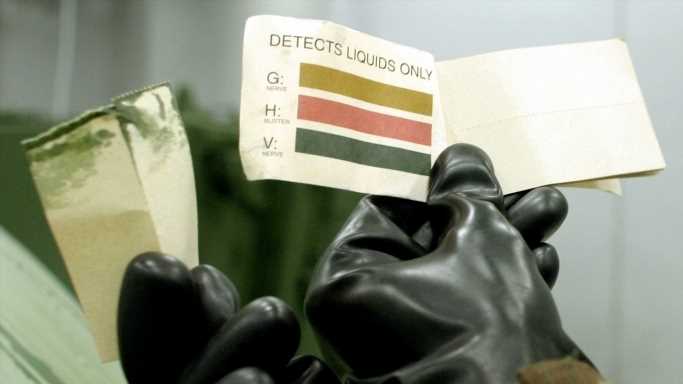Poisoned arrows and noxious smoke were some of the earliest methods of chemical warfare used in the ancient world. World War I, however, saw the first widespread use of industrial chemical gasses designed specifically to incapacitate and kill enemy troops, beginning when the Germans fired over 150 tons of chlorine gas at French and Algerian troops in Yves, Belgium, on April 22, 1915. This led the Allies to begin formulating their own chemical weapons – as well as gas masks and other protective gear.
Varieties of chemical agents developed by the Germans, French, Americans, and British during and after the war included multiple types of tear gas, lung irritants, nerve agents, choking agents, and vesicants, also known as blistering agents (substances that irritate the skin, eyes, and mucous membranes, causing large, painful blisters). In all, over 100,000 tons of chemical weapons were used during World War I, causing an estimated 90,000 deaths.
Some of the most dangerous chemical weapons have never been deployed in war, while others have seen extensive use and killed thousands of soldiers and civilians. Others, most often nerve agents that disrupt the central nervous system, have been utilized in terrorist attacks and political assassinations. (These high profile assassinations are some of the most famous poisonings in history.)
Many chemical agents are now controlled substances and their stockpiling or use in war is prohibited by the Chemical Weapons Convention of 1993, which classifies them as weapons of mass destruction. Most countries that synthesized large amounts in the 20th century, including the United States, have since disposed of their stockpiles.
To determine the world’s most dangerous chemical weapons, 24/7 Wall St. reviewed data on their lethality and other effects from the Federation of American Scientists (FAS), the Centers for Disease Control and Prevention, and other sources.
Click here to see the world’s most dangerous chemical weapons
Chemical nerve agents, blister agents, and choking agents intended for use in military operations to kill, seriously injure, or incapacitate people identified as chemical weapons by the FAS were ranked based on their estimated median lethal dose – meaning the dose of a substance that is lethal for 50% of subjects in a test group. Lethal dose values were normalized for a 70-kilogram (154-pound) human, and are estimated for percutaneous exposure to bare skin, unless otherwise specified. Riot control agents and herbicides were excluded from consideration. (Chemical agents aside, these are 18 of the deadliest weapons of all time.)
Sponsored: Tips for Investing
A financial advisor can help you understand the advantages and disadvantages of investment properties. Finding a qualified financial advisor doesn’t have to be hard. SmartAsset’s free tool matches you with up to three financial advisors who serve your area, and you can interview your advisor matches at no cost to decide which one is right for you. If you’re ready to find an advisor who can help you achieve your financial goals, get started now.
Investing in real estate can diversify your portfolio. But expanding your horizons may add additional costs. If you’re an investor looking to minimize expenses, consider checking out online brokerages. They often offer low investment fees, helping you maximize your profit.
Source: Read Full Article
